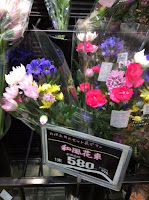 Visiting Seven Gods became very popular around middle Edo era.
Visiting Seven Gods became very popular around middle Edo era.People visited shrines and temples of seven gods especially in the beginning of the year wishing for a good luck.
Nowadays this trend still continues and many people visit shrines and temples.
You can find “Seven gods visiting tour” everywhere in Japan.
Koto city has two popular course: Fukagawa and Kameido.
Let me explain a little bit about Fukagawa course today.
List of temples and divine favors are as follows:
| Name of Shrine or Temple | Location | Name of God | Divine favors (goriyaku) |
|---|---|---|---|
| Fukagawa Shinmeiguu | 2 minutes from Morishita ST | Juroujin | God of long life |
| Fukagawa Inarijinja | 3 minutes from Kiyosumi Shirakawa ST | Hotei | God of good fortune |
| Ryuukoin | 6 minutes from Kiyosumi Shirakawa ST | Bishamonten | God of War, Success |
| Enshuin | 6 minutes from Kiyosumi Shirakawa ST | Daikokuten | God of good crops |
| Shingyoji | 5 minutes from Monzennakacho ST | Fukurokuju | God of happiness, wealth, and long life |
| Fuyuki Bentendo | 10 minutes from Monzennakacho ST | Benzaiten | Goddes of art and wisdom |
| Tomioka Hachimangu | 3 minutes from Monzennakacho ST | Ebisu | God of business |
 Although I showed the distance from the nearby subway station, you can easily walk all seven in about 2 hours. Good things to walk all the way are that you may find many interesting spots on the way. There are fine restaurants and coffee shops. If you feel tired, you can take a rest and enjoy fine food. Also there are several historical spots to know a history of Fukagawa area.
Although I showed the distance from the nearby subway station, you can easily walk all seven in about 2 hours. Good things to walk all the way are that you may find many interesting spots on the way. There are fine restaurants and coffee shops. If you feel tired, you can take a rest and enjoy fine food. Also there are several historical spots to know a history of Fukagawa area.One good information is that from Jan 1 to 15, you can purchase a special signature board for seven gods and can collect a unique red seal of god at each temple or shrine.
And when you collect all of seven red seals, your good fortunes will be promised.(I believe)
If you are interested, get a signature board, collect seals and catch the good fortues of the year.
(by Hiroyasu)


















































